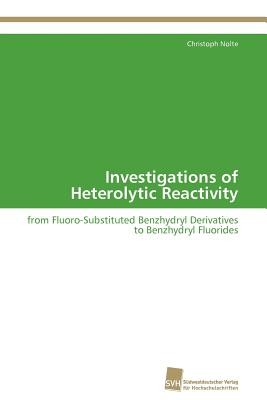
- We will send in 10–14 business days.
- Author: Christoph Nolte
- Publisher: Sudwestdeutscher Verlag Fur Hochschulschriften AG
- Year: 2012
- Pages: 232
- ISBN-10: 3838130723
- ISBN-13: 9783838130729
- Format: 15.2 x 22.9 x 1.4 cm, minkšti viršeliai
- Language: English
- SAVE -10% with code: EXTRA
Reviews
Description
The nucleophilic displacement reaction has been differentiated into SN1 and SN2 reactions. While in an SN2 reaction bond formation and breaking proceed simultaneously, the SN1 reaction proceeds via a stepwise mechanism. In most textbooks the SN1 reaction is defined as a reaction where the initial ionization (k1) is rate determining and the subsequent reaction of the carbocation with the solvent is faster. But this simple reaction scheme is only valid for systems where a highly reactive carbocation is formed. Mechanistic changes can occur when the lifetime of the intermediate carbocation is varied. The lifetime of the carbocation depends on its electrophilicity and the nucleophilicity of the solvent. The present work deals with the solvolyses of fluoro-substituted benzhydryl derivatives, the solvolyses of benzhydryl fluorides, the Change from SN1 to SN2 mechanism and the leaving group Dependence of the SN1/SN2 Ratio.
EXTRA 10 % discount with code: EXTRA
The promotion ends in 21d.06:24:45
The discount code is valid when purchasing from 10 €. Discounts do not stack.
- Author: Christoph Nolte
- Publisher: Sudwestdeutscher Verlag Fur Hochschulschriften AG
- Year: 2012
- Pages: 232
- ISBN-10: 3838130723
- ISBN-13: 9783838130729
- Format: 15.2 x 22.9 x 1.4 cm, minkšti viršeliai
- Language: English English
The nucleophilic displacement reaction has been differentiated into SN1 and SN2 reactions. While in an SN2 reaction bond formation and breaking proceed simultaneously, the SN1 reaction proceeds via a stepwise mechanism. In most textbooks the SN1 reaction is defined as a reaction where the initial ionization (k1) is rate determining and the subsequent reaction of the carbocation with the solvent is faster. But this simple reaction scheme is only valid for systems where a highly reactive carbocation is formed. Mechanistic changes can occur when the lifetime of the intermediate carbocation is varied. The lifetime of the carbocation depends on its electrophilicity and the nucleophilicity of the solvent. The present work deals with the solvolyses of fluoro-substituted benzhydryl derivatives, the solvolyses of benzhydryl fluorides, the Change from SN1 to SN2 mechanism and the leaving group Dependence of the SN1/SN2 Ratio.


Reviews